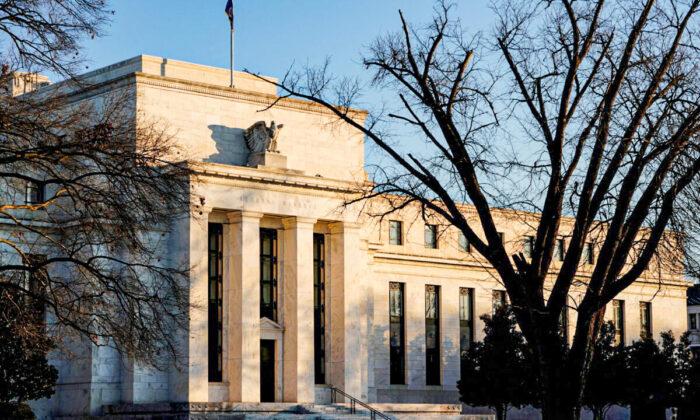Most investors believe when the Federal Reserve tapers its balance sheet, it means interest rates are going to rise. Yet, something peculiar happens when the Fed reduces its monetary support for the economy, as interest rates tend to fall. At the end of quantitative easing 3 in 2014 and later in 2017, interest rates fell as the Fed reduced its asset purchases.
On Wednesday, Dec. 15, Fed Chair Jerome Powell announced an accelerated pace of its current tapering program to deal with rising inflation. At the same time, investors are deeply short 10-year Treasury Notes and are short the entire Treasury curve as they bet on higher interest rates, despite history suggesting otherwise.
Most investors don’t understand the bond market or why a reduction of asset purchases leads to lower, not higher Treasury yields. From the outside looking in, as most investors do, it logically makes sense Treasury yields should rise as the Fed tapers. By reducing its purchases, the supply of Treasuries in the marketplace rises, which should cause prices to fall and yields to rise.
From a supply and demand perspective, this makes sense. During quantitative easing, the Fed is reducing the amount of marketable U.S. Treasury and mortgage-backed securities on the market. Despite the Fed’s best effort, yields tend to be rather volatile and rise slightly when the Fed engages in large-scale asset purchase programs.
The reason yields tend to rise slightly during quantitative easing has nothing to do with the supply and demand for U.S. government and agency debt. It has everything to do with investor psychology and the belief that easy monetary policy can lead to inflation.
Due to the belief quantitative easing can lead to inflation, for which there’s no historical evidence to support it can, investors and money managers begin dumping Treasury securities to buy inflation-sensitive risk assets. This reaction by the market participants leads to an increase in Treasury yields as the Fed attempts to mop up all the additional supply hitting the market and an over-allocation to risk assets.
Once investors and money managers are done dumping their bond allocations, yields tend to fall as the Fed continues its asset purchase program. By the end of most quantitative easing programs, yields have neither increased nor decreased much, as the Fed neutralized most of the selling by market participants who no longer wish to hold government debt in a potentially rising-interest-rate environment.
When the Fed announces a reduction to its asset purchase program, Treasury yields should rise as the supply of marketable U.S. government debt hits the market. With few market participants willing to hold bonds as it is, prices must fall, and yields must rise to attract potential buyers. Yet, this outcome doesn’t manifest itself for long before yields head lower.
Most market participants are baffled by collapsing yields following a balance sheet taper, as it doesn’t make sense. An increase in supply during a period where few want to hold U.S. government debt should lead to lower prices. Perhaps what investors and money managers fail to understand is that supply and demand are irrelevant, and perhaps that the Fed’s interventions in the bond market don’t matter.
Investors and money managers don’t understand that Treasury yields are forward-looking indicators of growth and inflation. This relationship is particularly true with the long bond, which is a harbinger of truth when it comes to future growth and inflation expectations. Yet, most market participants have little interest in the long bond and ignore its signals.
When the Fed reduces its support for the economy by reducing and ultimately ending its large-scale asset purchase program, the economy begins to price in future expectations. Without the Fed’s support of the economy, the bond market assesses the probabilities of whether the economy can stand on its own two feet or if growth is going to slow, or worse, turn lower.
When Treasury yields fell following the prior two balance sheet tapers, the bond market was screaming to market participants that without the Fed’s monetary interventions, the economy was going to revert from inflation to deflation. Sure enough, economic growth slowed following each balance sheet taper to the point where the Fed had to intervene again with more quantitative easing.
Even with the Fed purchasing $120 billion per month in U.S. Treasury and mortgage-backed securities, in April 2021, 30-year Treasury yields peaked, which signaled future economic growth is likely to slow. Thirty-year Treasury yields have continued to slowly decline since then, indicating the Fed’s asset purchases are having a minimal effect on future growth and inflation expectations.
The reason a balance sheet taper is bond bullish has nothing to do with the supply of bonds on the market, but everything to do with future growth and inflation expectations. Based on what the bond market is likely to tell us in the weeks and months to come, without the Fed’s support of the economy, growth and inflation expectations are likely to crash.





